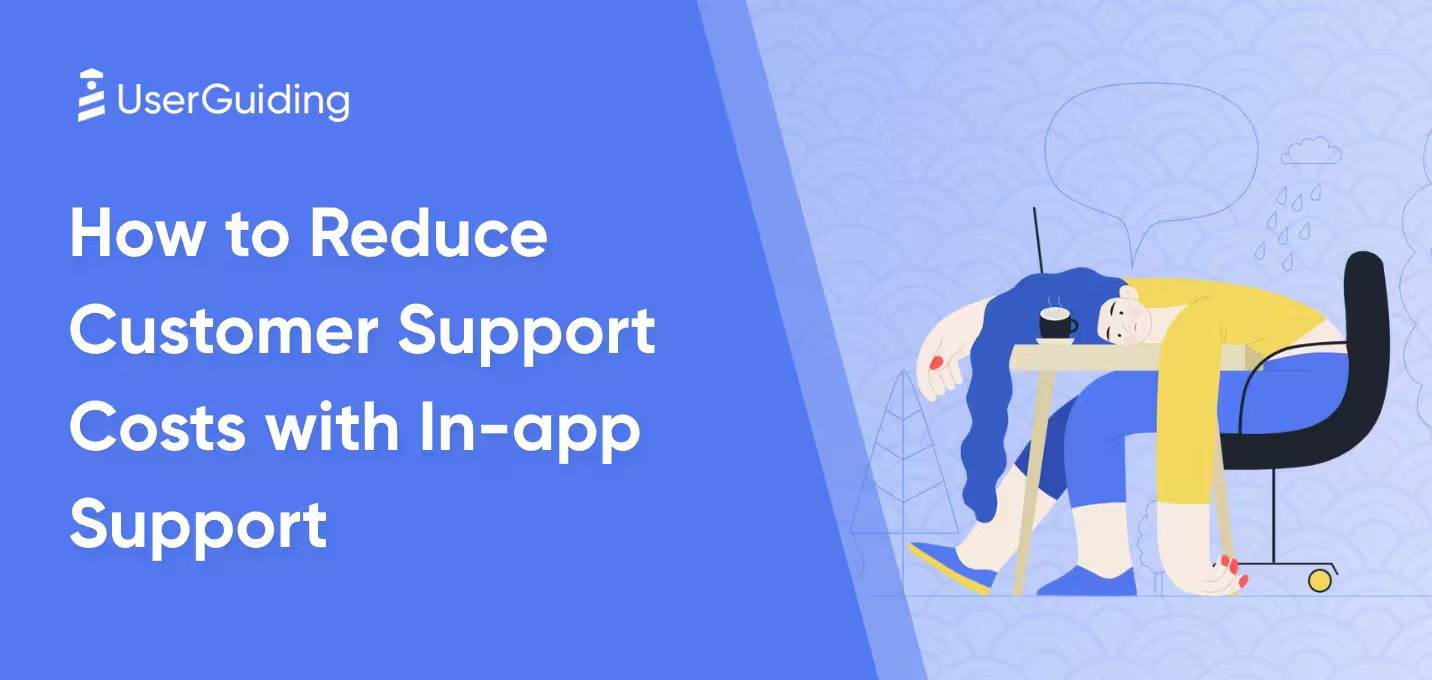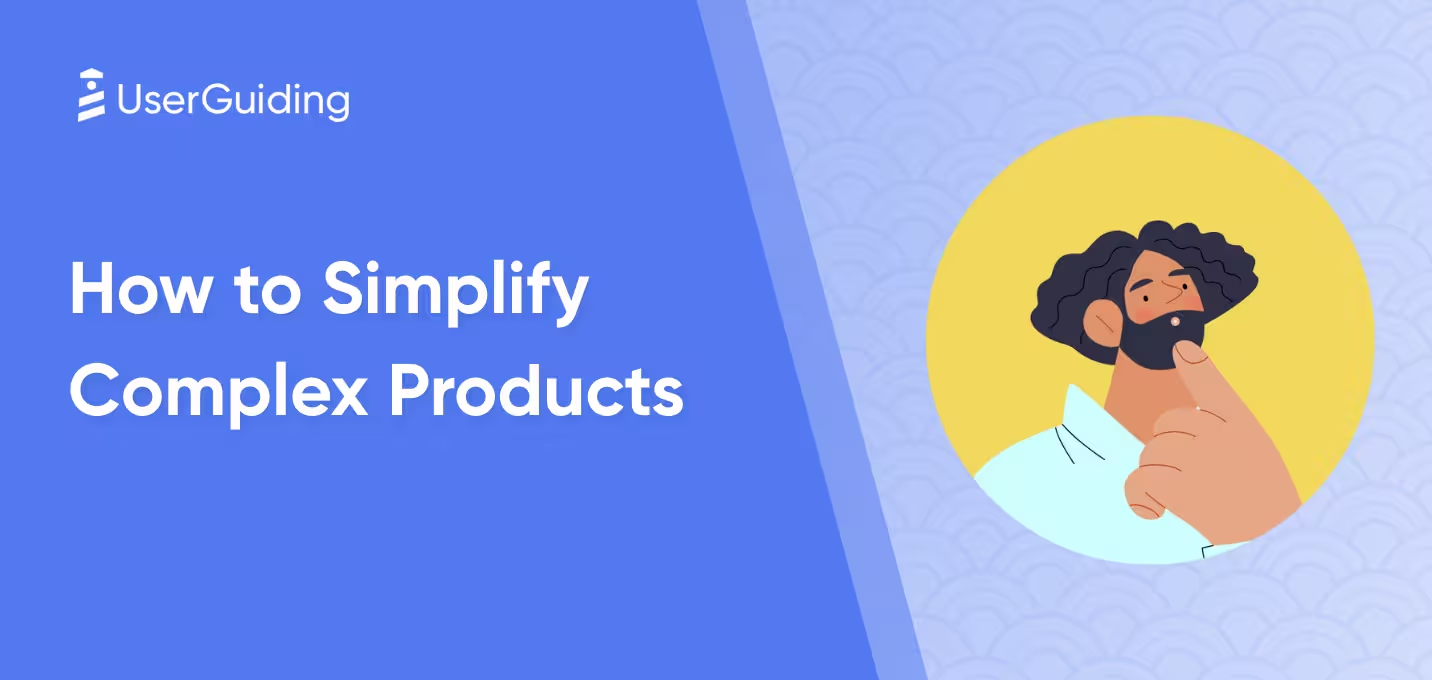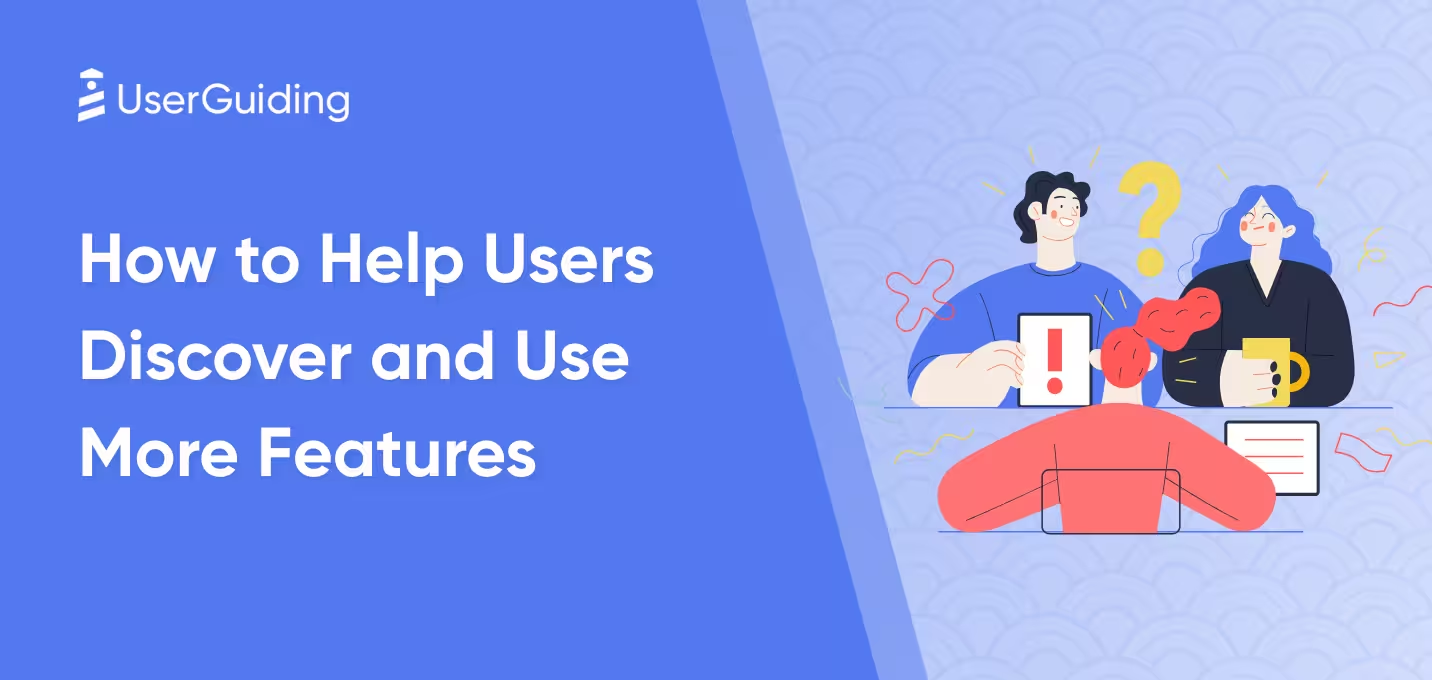

Are your customers truly satisfied? You might get some positive reviews here and there, but often, valuable feedback remains frustratingly out of reach.
What you need is a real deep dive into the ocean of insight covering all the hidden frustrations and untapped potential.
But how do you get the customers to talk?
With this article, you will get familiar with
- how to ask the right questions,
- choose the perfect channels, and
- transform customer insights into action.
Get ready to unlock the key to customer loyalty and business growth!
TL;DR
- Collecting customer feedback is a journey, not a destination. Integrate it throughout the customer experience (post-purchase, service calls, etc.).
- Don't pester customers right after a purchase or during frustration. Ask for feedback when they have had enough experience to provide meaningful insights.
- Complex surveys, jargon, or multiple questions in one sentence will confuse and lose customers.
- Show customers you value their feedback by responding promptly and implementing changes where necessary.
- UserGuiding's in-app surveys and NPS surveys help you understand customer needs and pain points right where they happen.
Why ask for customer feedback?
Imagine having a direct line to your best customer, the one who always gives you honest feedback. That's what customer feedback brings to your business.
By actively seeking out the opinions of your customers and clients, you get to understand
- what they love about your product and
- where you can improve.
It's a win-win!
Their ideas can spark awesome new features or help you fine-tune what you already do well.
Plus, listening shows your customers you care, which goes a long way in building loyalty and making them feel like part of the team.
So, the next time you see a chance to ask for feedback, think of it as a friendly chat with your favorite customer – it's a foolproof recipe for success!
Why customers don't want to leave a feedback
"Leaving feedback probably feels like a chore for customers."
If you have said this to yourself on many occasions, let us stop that thought right now. Because contrary to popular belief, customers are eager to leave feedback!
A SurveyMonkey survey reveals that 85% of customers are likely to leave feedback when they're happy with a product or service.
81% of the customers also provide feedback if they had a negative experience.
However, it is your responsibility to design a customer-friendly feedback process.
If your survey is too long or the website form is clunky, then customers will be unresponsive.
Therefore, creating a feedback system that's quick, easy, and even a little fun to use is very important!
Don't worry. In this article, you'll learn the best tips to design an efficient customer feedback system. Keep reading! 😉
How to ask for feedback from customers
Asking for customer feedback doesn't have to be a hassle!
Here are the best 7 methods of asking for feedback:
1. Conduct in-app surveys
In-app surveys are a powerful tool for gathering customer feedback directly within your mobile app or web application.
This allows you to capture user sentiment and insights while they're still actively engaged with your product or service.

UserGuiding's in-app survey feature helps users provide feedback with minimal disruption to their experience.
You can create short, targeted surveys and turn feedback into action with clear and actionable data.
2. Send NPS surveys
What if we told you that you can gauge customer loyalty and overall satisfaction with a single question?
That's what NPS surveys are for!
The Net Promoter Score (NPS) survey asks customers, "On a scale of 0-10, how likely are you to recommend our product/service to a friend or colleague?"
They are quick and easy to complete, making them ideal for email or in-app follow-ups.

The good news is you can create NPS surveys with UserGuiding as well and use the NPS dashboard to dive deep into customer segments, response rates, survey performance, and more!
3. Add feedback forms to your website or app
Feedback forms will be your secret weapon for gathering valuable customer insights and fostering a thriving online community.
Here's how to seamlessly integrate feedback forms into your website or app:
Keep it Simple
Don't scare users away with long, complex forms. Opt for concise questions that can be answered quickly.
Strategic Placement
Embed forms after key interactions like purchases, support chats, or app downloads.
You can also add a dedicated "Feedback" section on your website or a discreet pop-up on your app.
Multiple-Choice Magic
Utilize multiple-choice questions, star ratings, and smiley scales for ease of use.
Consider including an open-ended text box for more detailed feedback.
Mobile-Friendly Design
Ensure your feedback form is optimized for mobile devices with clear buttons and a responsive layout.
Thank Customers for Sharing!
Always express gratitude for their time and feedback. Consider offering a discount or reward to incentivize participation.
4. Create social media polls
Social media is a great place to connect with your customers! But how do you go beyond likes and comments and get them truly engaged?
Enter social media polls – a fun and interactive way to gather valuable feedback and spark conversation around your brand.
Here's how to leverage social media polls to your advantage:
Tap into the Power of Playful Questions
Craft engaging polls that pique your audience's curiosity and encourage participation.
Think "Which [product feature] are you most excited about?" or "What would you like to see more of on our social media?"
Keep it Visual
Utilize eye-catching visuals and emojis in your poll questions and answer choices to grab attention in the fast-paced social media feed.
Get Real-Time Insights
The beauty of social media polls is the instant feedback they provide.
Analyze the results to understand customer preferences, identify trends, and inform future marketing strategies.
Spark Conversation
Encourage discussion around your polls!
Respond to comments, address questions, and use the results to spark further engagement with your audience.
Variety is the Spice of Polling
Mix things up with different poll formats – multiple-choice, yes or no, or even image-based polls with product comparisons.
This keeps your audience interested and coming back for more.
5. Give a phone call
There's nothing better than in-person conversations to understand whether a customer is satisfied with your product or not.
Unfortunately, these conversations are very hard to pull off. Schedule conflicts, unenthusiastic customers, and more...
What you can do instead is give a short phone call!
You can strike up friendly chats with customers during service calls or interactions.
Your customer will avoid intrusive pop-ups and you will be able to thank them personally for their time and feedback.
It will also allow you to ask follow-up questions to gather valuable insights about your service!
6. Send an e-mail
Email remains a powerful tool for reaching out to your customer base and gathering valuable feedback.
However, generic "feedback request" emails often land in the dreaded spam folder.
Here's how to craft effective email campaigns that encourage customer engagement:
Personalization is Key
Segment your audience and personalize your emails with customer names and relevant product or service details. This shows you value their individual experience.
Keep it Concise and Clear
Busy customers won't wade through lengthy emails. State your purpose clearly in the subject line and opening paragraph.
Ask specific questions related to their recent purchase, interaction, or overall experience.
Offer Multiple Options
Provide your customers with a choice of how they'd like to respond. Include a link to a short survey, offer the option to reply directly to the email, or suggest a phone call for more detailed feedback.
Incentivize Participation (Optional)
Consider offering a small discount, reward points, or entry into a prize draw as a thank-you for their time.
Check out this example and tailor it according to your needs:

Email template for customer feedback
7. Request customer feedback through review platforms
Review platforms offer a powerful space for your customers to share their experiences and influence potential customers.
Here's how to leverage review platforms to build trust and credibility for your business:
Identify Relevant Platforms
Focus on review platforms frequented by your target audience.
A younger customer group might take their reviews to social media while older groups may write reviews on Google My Business, Yelp, G2, Trustpilot, or other industry-specific review sites.
Make it Easy to Leave Reviews
Include clear links to your profiles on relevant review platforms in your email signatures, website, and marketing materials.
Consider QR codes in physical locations for a quick and easy way to access your review page.
Respond to All Reviews (Positive and Negative)
Thank customers for positive reviews and acknowledge their feedback. For negative reviews, address concerns promptly and professionally, outlining steps you're taking to improve.
Showcase Positive Reviews
Strategically feature positive reviews on your website and marketing materials. This builds trust with potential customers and highlights the strengths of your business.
Encourage Authentic Reviews
While positive reviews are great, don't incentivize fake reviews. Focus on encouraging genuine customer feedback that reflects real experiences.
Customer feedback questions for valuable insights
Not all customer feedback questions serve the same purpose.
Some will give you clues about what's working well or what needs to be changed, while others will show you the big picture of customer experience.
To make things easier for you, we've created a list of questions to gather valuable insights across different stages of the customer journey:
Understanding Needs and Expectations
- What were you hoping to achieve with our [product/service]?
- What are your biggest challenges related to [industry/problem your business solves]?
- What features are most important to you in a [product category]?
Gauging Satisfaction and Experience
- How satisfied are you with your recent purchase/interaction with our company? (Use a rating scale)
- On a scale of 1-10, how likely are you to recommend us to a friend or colleague? (Net Promoter Score)
- What was the most frustrating part of your experience with [product/service]?
Identifying Improvement Opportunities
- What could we have done better to meet your expectations?
- What new features or services would you find most valuable?
- Is there anything missing from our current offerings?
Encouraging Innovation
- How do you typically use our [product/service]?
- In what ways could we improve your overall experience with our brand?
- What innovative solutions would you like to see in our industry?
Best practices while asking for customer feedback
1. Keep it short and sweet
People are busy. Opt for quick surveys, pop-up questions, or concise email requests.
Offer multiple channels like email, text message, social media, or website forms to make your process convenient.
2. Analyze and categorize feedback
Identify themes, trends, and areas for improvement.
Segment your audience and tailor email requests with customer names and relevant details.
Monitor the impact of implemented changes.
3. Prioritize feedback
Focus on addressing the most frequent and impactful issues.
Respond to all feedback (positive or negative) and show you care.
4. Communicate actions taken
Inform customers how their feedback is being used and close the loop by responding directly to customers who provided specific feedback.
5. Celebrate successes
Highlight positive changes driven by customer input.
You can partner with influencers to spread the good news or host a giveaway to celebrate your progress!
6. Include gamification
Inject a sense of fun, challenge, and reward to keep users engaged and motivated. When applied to surveys, gamification can completely transform the experience.
This can increase response rates and provide more accurate feedback.
Bad practices to avoid while asking for customer feedback
1. Treating customer feedback as a one-time event
Feedback is an ongoing loop, not a single interaction. Integrate feedback mechanisms into your customer experience at various touchpoints.
Make sure to incorporate feedback options throughout the customer journey, such as after purchases, service interactions, or website visits.
This allows you to gather insights at different stages of the customer experience.
2. Asking at the wrong time
Don't bombard customers right after a purchase or during a frustrating experience. Let the dust settle, and choose a neutral time for feedback requests.
Avoid sending a survey immediately after a customer contacts support about a faulty product. Wait a day or two after the issue is resolved to ask for feedback on their experience.
3. Not Respecting Customers' Time
Complexity is the enemy of participation.
If your survey or feedback form is full of technical jargon or you're asking multiple questions in a sentence, the customer will be confused or quit altogether.
4. Beware Leading Questions
Phrasing questions in a way that steers customers towards a specific answer can skew your results.
Focus on neutral and open-ended questions that encourage honest feedback.
Avoid questions like "How satisfied are you with our AMAZING new product?" Instead, ask, "What are your thoughts on our new product?"
5. Being Uncommunicative
Don't leave customers wondering what happens to their feedback.
Communicate the actions you're taking based on their input, even if it's to explain why certain changes aren't feasible.
Share updates on your website, social media, or through email newsletters about how customer feedback is being used to improve your products or services.
Key Takeaways
Customers actually want to give feedback! It's your job to make the process easy and engaging (surveys, social media polls, etc.). Meet the customer where they are by integrating feedback mechanisms throughout their journey.
If you ask the right questions, you can understand customer needs, gauge satisfaction, identify improvement opportunities, and encourage innovation.
Multiple channels (email, surveys, social media) and clear, concise questions are your friends.
Don't forget to thank customers for their time and show appreciation for their insights. Most importantly, take action on their feedback and communicate how it helps you improve.

















.svg)
.svg)
.svg)
.svg)
.svg)

.svg)
.svg)












.svg)
.svg)




.png)















